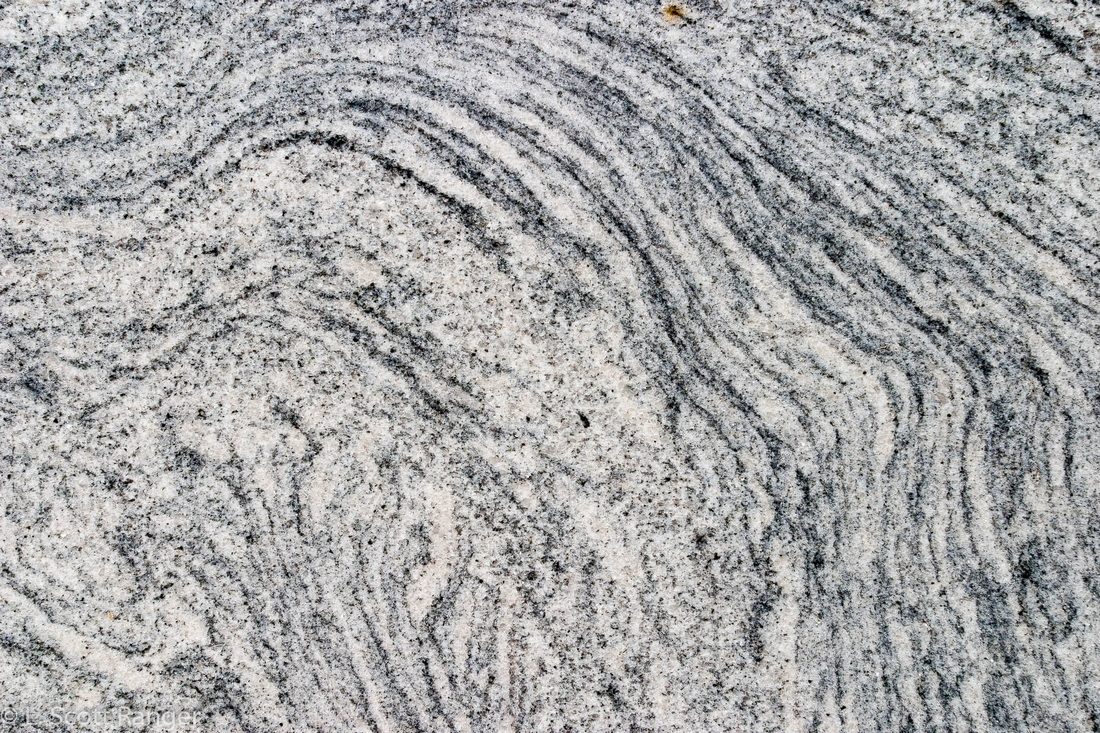St. Denis Rock Pile EarthCache
-
Difficulty:
-

-
Terrain:
-

Size:  (other)
(other)
Please note Use of geocaching.com services is subject to the terms and conditions
in our disclaimer.
This is a very short Earthcache Mulitcache (3 Wp's 30 m apart) that will teach you about Migmatite rocks
What is a migmatite
A migmatite, or "mixed rock" in Greek, is a banded, heterogenous rock composed of intermingled metamorphic and igneous components. To learn about metamorphic and igneous rocks you can visit GC67AVX). Typically, the rock contains alternating lighter layers (leucosomes, comprised of light-colored minerals such as quartz, feldspar, and muscovite) and darker layers (melanosomes, comprised of dark-colored minerals such as amphibole and biotite). The darker layer should I say melanosomes) usually ocours between two lighter layers (well leucosomes as you know now) if fragments of the more or less unmodified parent rock (mesosome) are still present, it is arranged in rims around these fragments. When present, the mesosome is intermediate in color between leucosome and melanosome.

Why do we see this beautiful texture ?
The texture is the result of partial melting of the rock during its metamorphism. The melting of the quartz and alkaline minerals as well as causes the development of a lines or patterns in which minerals are arranged in more or less parallel bands. Remember while some minerals may melt to form new and different strictures outer (like paleosome) will remain solid.
So when did most of these Migmatite’s formed
The Migmatite’s you will visit in this EC were once a graywacke coarse grain sandstone), then they were transformed to a schist during the Ordovician Taconian Orogeny (mountain building perioed that created a mountain chain from east Canada to the US east coast), was heated up to temperatures that permitted partial melting (anatexis) around 460 million years ago. While we are now creating Migmatites that we said are a mix of two types of rocks we can also go another step and end up with only type of rocks igneous. The Felsic minerals like quartz, potassium feldspar, and muscovite have the lowest melting temperatures, and thus are “sweated out” of the source rock as felsic magma. In those special instances if we where present there we could see the little flecks and blobs of “leucosome” as we called them before peppered throughout a rock body, and voilà we are present in the birth of one of our most common rocks: granite.

How to log this cache
Visit all 3 waypoints and answer these .
WP 1 (starting point) find the mineral you see in the image below, what is this mineral and what is its diameter (aprox.)

WP 2 What is the rock at this site metamorphic or igneous ? explain how did you decide
WP 3(A)you will find 3 rocks how many of them are Migmatite's?
(B) Also at WP 3 examine the shape of the curves/lines on the rock based on the text what causes the lines to twist and band. You will also notice they point at a certain direction why do you thing caused that?

Additional Hints
(No hints available.)